Escape to the Country
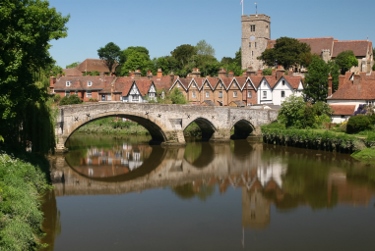 The one enormous benefit of selling a house in London and making the escape to the country is value for money. Houses in London are hugely over priced for what they provide in terms of indoor and outdoor space and quality of life. You can exchange a relatively small London property with little or no garden for a comparatively huge country house with more bedrooms, a big garden, etc. etc. Whilst London house prices continue to increase, country house properties have increased at a slower rate; the benefit to London house sellers being even more value for money when relocating to the country. Most people living in London have no idea how much more they can get in the country for what their London property is worth. You can even ‘up-size’ your home whilst ‘down-sizing’ your mortgage.
The one enormous benefit of selling a house in London and making the escape to the country is value for money. Houses in London are hugely over priced for what they provide in terms of indoor and outdoor space and quality of life. You can exchange a relatively small London property with little or no garden for a comparatively huge country house with more bedrooms, a big garden, etc. etc. Whilst London house prices continue to increase, country house properties have increased at a slower rate; the benefit to London house sellers being even more value for money when relocating to the country. Most people living in London have no idea how much more they can get in the country for what their London property is worth. You can even ‘up-size’ your home whilst ‘down-sizing’ your mortgage.
‘Location, location, location;, this widely used mantra is as much a truism in the country as it is anywhere else. In London you can turn a street corner and go from a desirable location to one much less desirable, whereas in rural and village areas, it is more about balance. The balance between being close to what you need, and your home having an immediate environment that ticks all your boxes. Because we don’t have streets lined with similar houses, you cannot simply pick a post code and zoom in.
Location has a huge bearing on the price of the property, re-saleability and appreciation in value. This is true for all properties. There are many factors which determine the desirability of a country location. Closeness to the best schools, fashionable retail and top quality restaurants all go hand in hand with attractive villages in the prettiest countryside. Add good commuter routes, and you have a winning combination with London salaries maintaining the quality of the local services. Your challenge is to find the spot where your budget meets acceptable transport and the country living environment you desire.
Consider
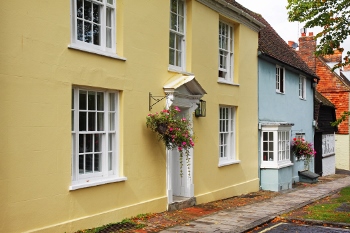 Town, Village or Rural?
Town, Village or Rural?
- Town, Village or Rural? - What attracts some to a location might have the opposite effect on others.
- Some getting out of London will crave remoteness, a decent bit of land and the peace and tranquillity of the great outdoors.
- Others might think such an extreme change will be too much and instead may choose to live in or near a village or small town.
- Some central village or town properties won’t come with a lot of land but a secluded garden or courtyard might be all you require. Other properties will have a decent sized garden, yet still be within a short walk from facilities such as shops, school and station.
- Much sought after ‘edge of village’ locations may have paddocks or their own woodland, perhaps with adjacent farmland, and so combine the advantages of both the village and rural existence.
How Remote Is Your Rural Idyll?
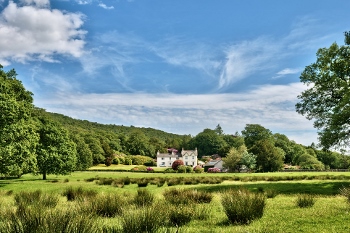
Many moving out to the country may consider that any road noise is totally unacceptable. If a long driveway off a quiet narrow lane is your choice, you will need to budget for:
- Maintaining a driveway, possible a shared cost between yourselves and a few others.
- Maintaining a pipe-line to the mains water supply, which could be a considerable length of pipe work.
- Alternative power supply. A surprising number of rural properties have no mains gas supply so all-electric, gas cylinders, an oil tank and boiler or other greener alternatives are the options.
- Maintenance and emptying of private septic tanks is the option if rural properties have no mains sewage.
However: There is a workable solution to all that the rural life presents - add sturdy 4 x 4 vehicles and realistic expectations, then sit back and enjoy what estate agents refer to as a ‘pin drop quiet’ location.
Or Is A Less Remote Spot For You?
Many gorgeous country houses have:
- All the utility services connected.
- Easy access to a good road that is always gritted on cold winter nights.
- A bus route that connects to a local village, town, schools and station. [It is a little known fact that rural roads often have long ‘request stop’ sections instead of regular bus stops. In these sections a passing bus can be asked to stop at any safe point – such as your front gate!]
Whatever Your Choice, There Are Aspects of Modern Life That You May Want to Check.
- Supermarket deliveries – most locations in South East England will have a choice of companies willing to deliver, even when their nearest branch is not your closest store. The drivers sat nav. will help your shopping find you even in the most rural nooks. If you have a firm favourite, check post codes on their website. We have not heard of any areas in our counties where the ‘virtual trolley’ cannot be delivered by at least one of the major players. Other internet companies deliver to anywhere with a postal address, so there is nothing to worry about. Many people have drivers leave goods in the porch or behind the stables – we don’t exactly go out and leave all the doors unlocked, but you will feel much safer with significantly lower crime rates. Click and collect spots seem to be everywhere so you don’t need to worry about being in.
- Mobile phone signals varies from company to company. Improving all the time, there are some small pockets where signal strength is unreliable. Signal boosters that use your Wi-Fi to give good reception in your home are available from most providers, some are even free. Check post codes on-line, ask vendors and don’t forget to look at your signal indicator when viewing a property.
- Broadband is pretty universal in these counties although speeds will depend on your distance from the phone exchange. Here village houses, or those closer to the village exchange will have an advantage. The ‘super-fast’ fibre optic broadband providers are rolling out their services into the villages and countryside. If this is vital to you it is worth checking any postcode you are interested in. A useful tool is provided by Ofcom. Current broadband speeds, Mobile 2G, 3G, and 4G coverage, Freeview TV and Digital Radio can be checked via a post code, village name or a click on a map. For a preliminary check visit http://infrastructure.ofcom.org.uk/.
- With an inevitably larger home, you might find that your Wi-Fi will need a booster or extender, or perhaps, it is fine if it won’t reach the kids bedrooms.
Ancient, Period, Agricultural, Modern, Contemporary, New Build, or Plot?
There is a wonderful range of building types in our part of rural England, the huge majority of country homes being totally unique and individual. As buyers you might have a particular vision in mind for a country home or may be open to ideas and consider a range of building styles.
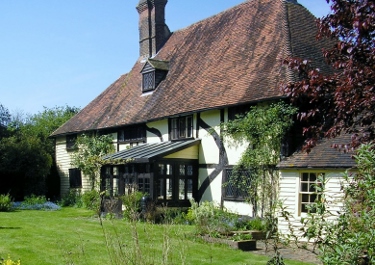
- Many splendid family homes are Medieval in origin. These may date from as far back as the 1400’s with their exact origins lost in time – a great research project. Characterised by beams inside and out, once weaver’s or yeoman’s houses, they will need some maintenance and love. Always use a surveyor who has an affinity with this sort of house but remember – ‘500 years and still standing’ is better that any builders guarantee! These will nearly all be Listed Buildings – see our details.
- Other less historic houses will be on offer, ranging up to the early 20th century, still with lovely original features. Many houses in each area will have regional features such as white weatherboarding in Kent, flint and hand-made brick in Sussex, Horsham Stone roof tiles in Surrey or mellow ironstone in Oxfordshire. Inside you may find original stone or tile flooring and hand-made woodwork. There is often a pleasing mixture of building materials and styles as a property has evolved over time.
- Barn conversions make superb homes, allowing for open plan living and an airy feel. It is usually a stipulation of conversions that at least some part of the building remains open to the rafters. This, and their natural triangular cross section, results in houses that are bigger downstairs than up, excellent living and entertaining space, but it can leave you short on first floor bedrooms.
- Oast, dairy, stable, and watermill conversions can be found in rural areas and in the villages are homes that may once have been the old forge, village stores, old school house or village pub. All these make intriguing homes.
- Most recently some villages have found their pub failing to weather the economic roller coaster and are available for a change of use. Lucky villages will have the pub bought by an individual with the cash and know-how to up-grade to an attractive bar and successful restaurant. Other places, especially those with more than one public house, will find one is on the market. They can make super homes and can be bought for much less than a house of similar size. Converting to residential use may not be as easy as it sounds with local councils asking for compensation for lost business rates and objections being raised from villagers. A possible money spinner, this route needs careful consideration and the risks needs weighing up and specialist advice sought.
- You might find other properties on the market that appear to be a great bargain with the letters AOC in their details. This is an ‘Agricultural Occupancy Condition’. Essentially it means that the dwelling was given planning permission in order to provide necessary housing for a farmer or forester to live near their place of work. If you are considering a serious equestrian business, orchard, vineyard or farm smallholding, this might be for you. However, working on the land must be the main income and not a side-line or hobby. These AOCs can be overturned if you can prove that they are not needed, but take lots of good legal advice and consider the worst case scenario before going down this route.
Modern houses present more of a blank canvas and have become increasingly popular over the last decade. Contemporary styling leading to the addition of specialist flooring, bi-fold doors, sleek kitchens, designer bathing, innovative lighting and premium finishing touches. With an open layout that suits your way of life, a house that might lack the ‘Ahhhh factor’ may have the ‘Wow factor’.
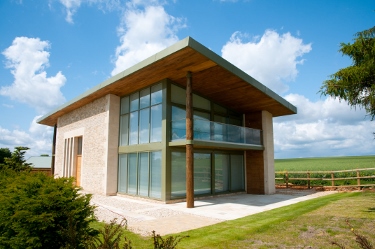 For those keen to do their own bespoke make-over, a more recently built house will give plenty of scope without conservation issues. Cost effective and planet saving ‘eco’ adaptations can be made too.
For those keen to do their own bespoke make-over, a more recently built house will give plenty of scope without conservation issues. Cost effective and planet saving ‘eco’ adaptations can be made too. - Those wanting to build the home of their dreams from scratch will need to search hard for a suitable plot. Spots with planning permission may come up occasionally, but expect to pay £350,000+ for a good location in an area with the London commute just over the hour.
- It is possible to buy an ‘inadequate’ house in your perfect setting, live in it whilst you plan, approve and build your grand design on the land. When finished you move in and knock the previously existing house down. It is not easy, but you are more likely to get planning permission for this than to ever get permission to build a reasonably sized house where none has stood before. Expensive and potentially stressful, but we know of families who have gone down this route with fantastic results, building their ‘forever home’ in the perfect location.
Garden, Grounds or Acreage?
It might be more useful to consider, not the acres you want, but what you want to do on your land and how much time or money you have to devote to it.
- Woodland requires little or no maintenance, it must usually remain as woodland but can provide your own fire wood and somewhere to go foraging for nuts, elderflowers and blackberries or just a special place to walk or camp out.
- Paddocks can need very little looking after. Many people have an arrangement for a local farmer to graze their fields or let the grass grow tall through the summer with a farmer taking the hay off once a year. As with woodland, other non-agricultural uses of this land is difficult – but you can have lots of fun in a field!
- Flower beds and boarders vary from a few tough shrubs to prize worthy collections of herbaceous perennials, so a small country garden of about 0.3 acre might demand a significant time commitment if it is well planted. It helps to have an idea of the sort of garden you want, but to remember that a family and its garden will grow to suit each other.
- Anyone with a lawn area over half an acre will benefit from a ride-on tractor-mower which makes the job easy and has lots of other uses, including early driving lessons for the kids!
- Hedging needs trimming at least once a year, often a job for hired help, unless you are very keen and able.
- Grow your own – whether it is a few low maintenance fruit trees in the corner of a paddock or a sizeable veg. plot – if you have the space, you are limited only by your imagination.
- Anything less than 0.3 acre, or property details with no mention of the acreage, will be small for a country garden and might leave you wanting more. If you have equestrian needs or fancy a small holding, your acreage needs will be considerably more.
- If you are looking for a swimming pool and tennis courts a suitable plot will be needed.
- Having your own land gives a ‘buffer zone’ between you and anyone else, but if your garden boarders onto woodland or agricultural fields, a smaller plot size can give all you need.
SO WHAT IS AN ACRE? Country properties will detail their plot size in acres, an ancient measure of land that is actually 43,560 square feet. Rather hard to visualise but if an acre is square in shape (few are) it would be about 200 feet in each direction. The pitch at Wembley is about two acres, the garden at Buckingham Palace about 40 acres and Hampstead Heath nearly 800.
Something to know – the letters ‘tbv’ after a measurement of acres, means ‘to be verified’, so are unproven and could be way out. These days agents should be able to check a plot’s size from Land Registry details using a web tool to measure from the boundary diagram, so do ask if it does not feel right or if it is important to you.

Changing your new home?
Few of us find the perfect home that realises all our hopes and dreams without any need for change. If you fall in love with a property but have changes in mind getting a good idea of likley costs is obviously important. It is also vitaly important to consider what, if any, planning restrictions might apply to a house or its land.
If you are planning on developing or altering a property there are several consideration beyond seeking regular planning permission, and different terminology and acronyms that might crop up on house details.
Listed Buildings – require ‘Listed Building Consent’
LISTED BUILDINGS
The rural areas around London are blessed with some of the most beautiful period houses anywhere in the World. Indeed it is the medieval wooden framed Tudor properties that are icons of traditional English country life. Similarly Queen Anne and Georgian architecture is a symbol of the Grandeur of those ages in our history and no historical period has lent more to the idealistic country living dream than that of the Victorian age with its quintessential farmhouses and kitchen gardens. There are approximately 375,000 listed building in England most of them are period properties.
When buying a listed building you are buying a piece of history that could date back several hundred years. The sheer wonder of living in a house that has stood for 500 years is something quite unmatched in most people`s lives. By moving to the country, you really can experience it. The magical atmosphere of oak beamed properties with their fascinating nooks and crannies, crown posts, secret hidey holes, ancient orchards and woodlands is amazing.
- ‘English Heritage’ is the body ultimately responsible for planning consents for all listed buildings and they have a useful website which details when consent is needed and offers useful advice on caring for older buildings
- The point of contact will be the Conservation Officer at the relevant Local Authority and they are always willing to discuss consent informally before an application is made.
- It is essentially the nature and character of the historical or architecturally significant building that the body strives to preserve.
- It might be worth knowing that outbuildings and even structures such as garden walls can be included in the listing.
- Not all period properties are ‘listed’ some very lovely ones have simply ‘slipped through the net’. This can be an advantage as long as no previous owner has abused their custody of the property and spoiled it in some way. You can search an address on the English Heritage website to check if it is indeed listed.
- Listed building status comes in several forms but the most common are Grade 11 listing.
- Grade 11* listed properties are fairly rare and carry historical or architectural importance
- A Grade 1 listed building is very rare, usually with much providence and additional restrictions on their use.
Conservation Areas
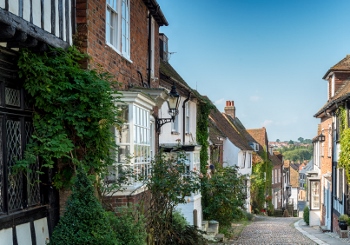
Conservation Areas will carry additional planning restrictions
- The areas are designated by the Local Council and usually contain listed buildings.
- Consent to external alterations to all buildings in the conservation area, including non-listed buildings, garden structures, fences and even trees is required.
- They are most commonly found in village or town centres.
- Local Borough or Town council web sites are the place to look for details of where the Conservation Areas are.
- Living in a designated Conservation Area gives you the security that your neighbours can not do anything to denigrate the character of the area. If you are buying in a village, it will be worth checking that the properties you can see are included in the designation.
AONB 'Areas of Outstanding Natural Beauty'
These are areas designated to have their natural landscape protected.
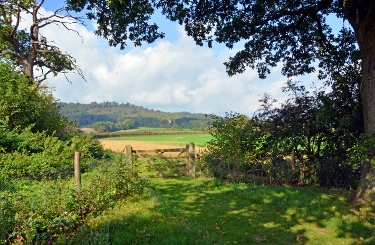 There are 33 AONBs in England and Wales. Those within striking distance of London are: High Weald, Kent Downs, Surrey Hills, Chilterns, North Wessex Downs, Dedham Vale and Suffolk Coast and Heaths.
There are 33 AONBs in England and Wales. Those within striking distance of London are: High Weald, Kent Downs, Surrey Hills, Chilterns, North Wessex Downs, Dedham Vale and Suffolk Coast and Heaths.- They are managed by Local Authorities in association with advisory committees and ‘Natural England’
- Management of land including woodland, farmland and small holdings, is also covered by the conservation principles if it is within an AONB.
- Restrictions to what you can do to the exterior appearance of your buildings are similar to those of a conservation area. Garden structures, fences and even trees will also come under the restrictions.
- Importantly, restrictions will cover neighbouring properties and businesses.
- If you are lucky enough to find a property with a beautiful view in one of the AONBs, you can be reassured that the view you fell in love with is protected, and drastic changes are unlikely.
SSSIs 'Site of Specific Scientific Interest'
- These are much smaller and more specific areas than AONBs and may relate to a specific wildlife or geological feature such as a stretch of river or a wood.
- Natural England will give advice and express their management principles and there may be a ‘Management Agreement’ between owners and Natural England.
National Parks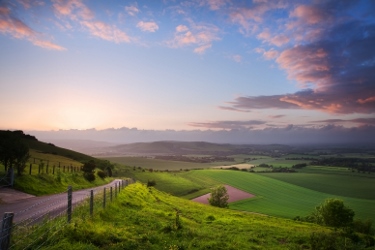
These are responsible for all planning applications within their boundaries. Known as ‘Britain’s Breathing Spaces’ there is public access to the network of well signed and mapped trails and routes, but this does not grant freedom to wander freely over privately owned land or farmland.
- The New Forrest is home to over 34,000 people mostly living in very small communities. This special area has been shaped and maintained by the practice of ‘commoning’ where certain people are allowed to continue ancient traditions of letting their animals loose in the forest.
- The South Downs is the newest of the 10 National Parks in England, its management plan is laid down by the National Park Authority. Much is farmland and the area includes villages and private land. It is home to over 100,000 people.
Other protected areas are owned or managed by:
- The National Trust
- The Forestry Commission
- Local Council Country Parks
- The RSPB
- Wildlife Trusts
- The Woodlands Trust
- English Heritage
- There are also small parcels of land owned by town or parish councils that are designated for public enjoyment and wildlife.
- It is worth being aware of any implication there may be if your property is in or adjacent to a protected area.
What else should we worry about?
- Much has been said about rural properties having flooding problems in exceptionally wet winters. You might have been left with the impression that most of the countryside was under water. In truth, only a few places were badly affected. The Environment Agency has an excellent website which shows flood plains and places likely to be affected. If you are viewing a property with all new flooring downstairs –perhaps ask about flooding! Some properties have ground floor or basement rooms which are very effectively protected by their own pump systems with back-up batteries. Other properties will present a risk and require high insurance premiums to be paid and this should be reflected in the sale price. If a property seems too good to be true, worth asking about flood history before you set your heart on it.
- Public rights of way such as footpaths or bridle paths can cross a rural property and this might have an impact on your enjoyment of the land. You will not be able to block the path and could also have a duty to maintain it.
- Overhead electricity cables, mobile phone masts, wind turbines and solar pannels are unpopular due to aesthetics and presumed health risks, but if you have a very large land area, they can provide a handy income.
- Try to find out who owns adjacent land or property. This can be done via the Land Registry. Plots of land with access, especially those with an existing outbuilding, will be of interest to the travelling community wishing to settle.
- If you are going to pay a premium for a view, try to find out if anything is going to mar this. Fields of polytunnel are less attractive than fields of fruit trees, although they are generally only used for a brief part of the growing season.
There are aspects of country life that might initially prove annoying; being stuck behind a tractor because it is harvest, cold winters with real snow on the driveway, the ‘wiff’ of a freshly fertilized field, and those birds do start their chirping early in the spring time. It may not be the life for everybody, but we would say that moving from London to the country is the very best thing our families have ever done.